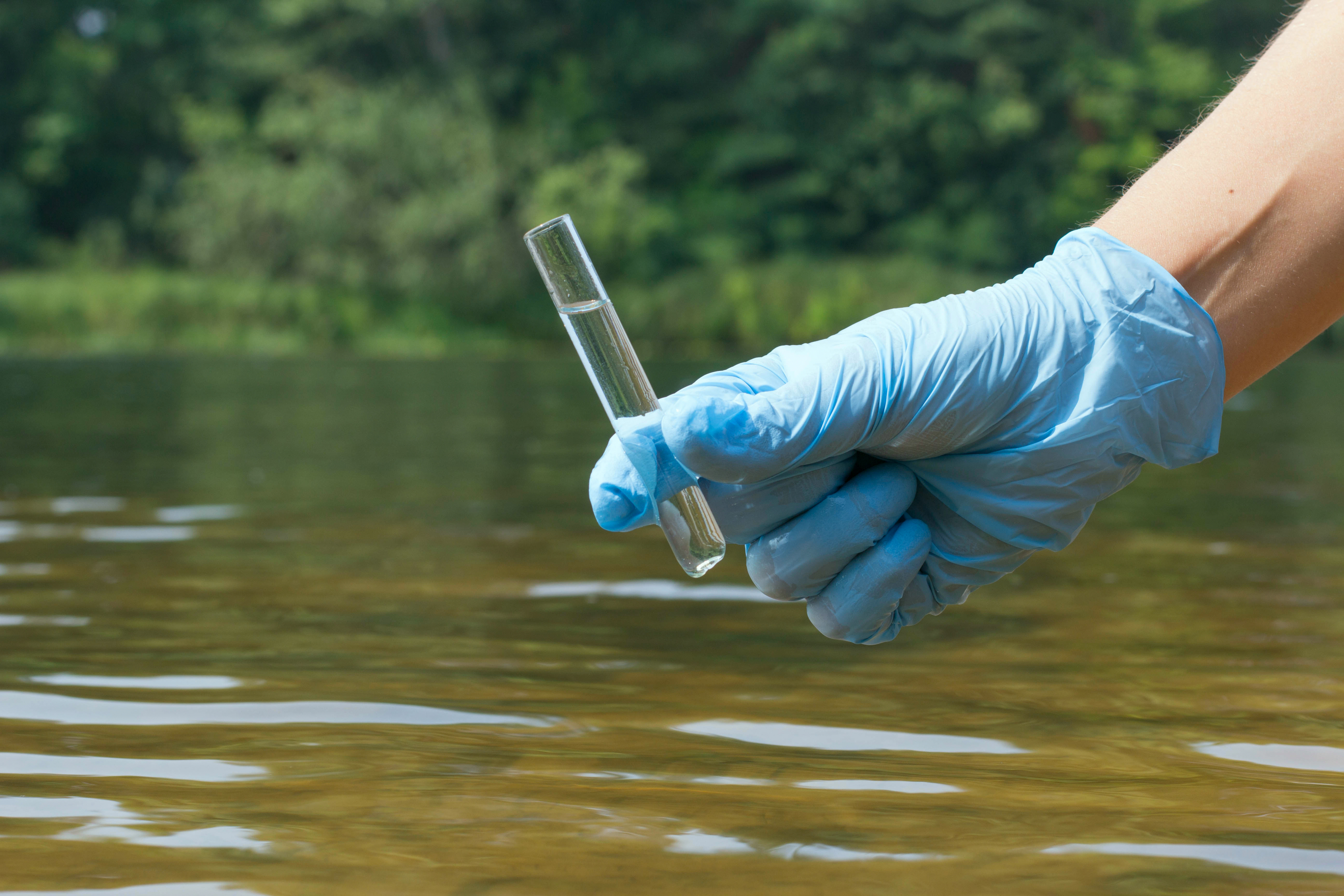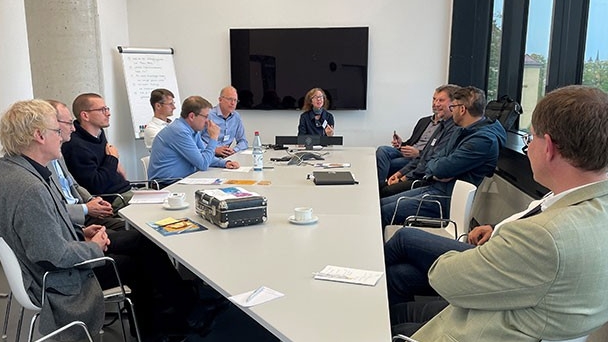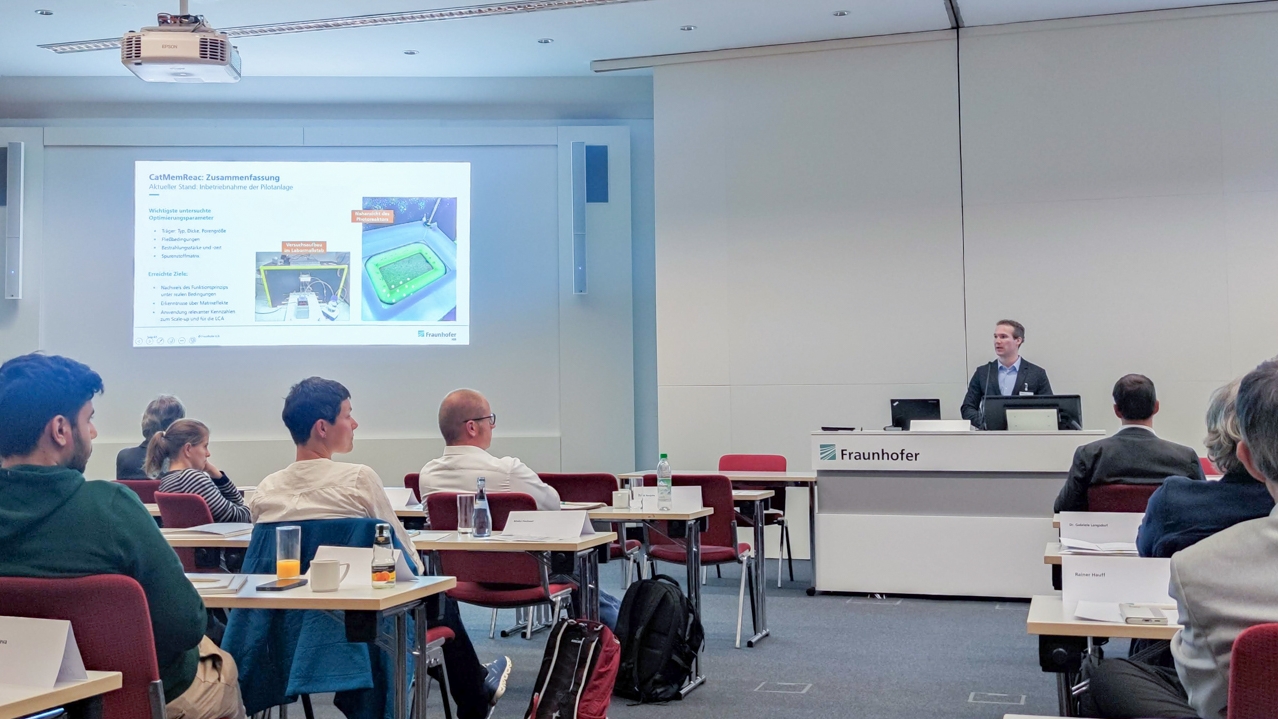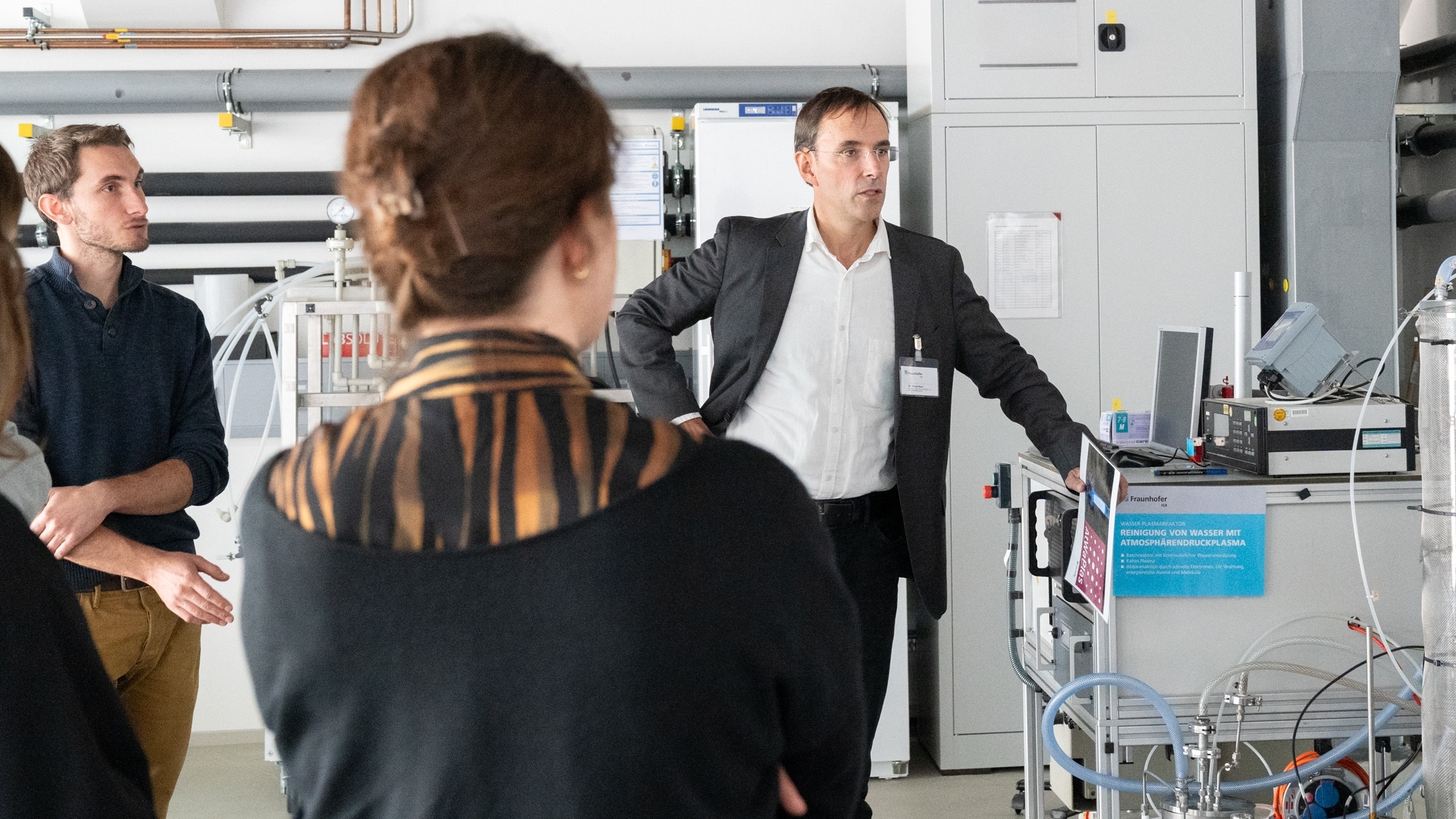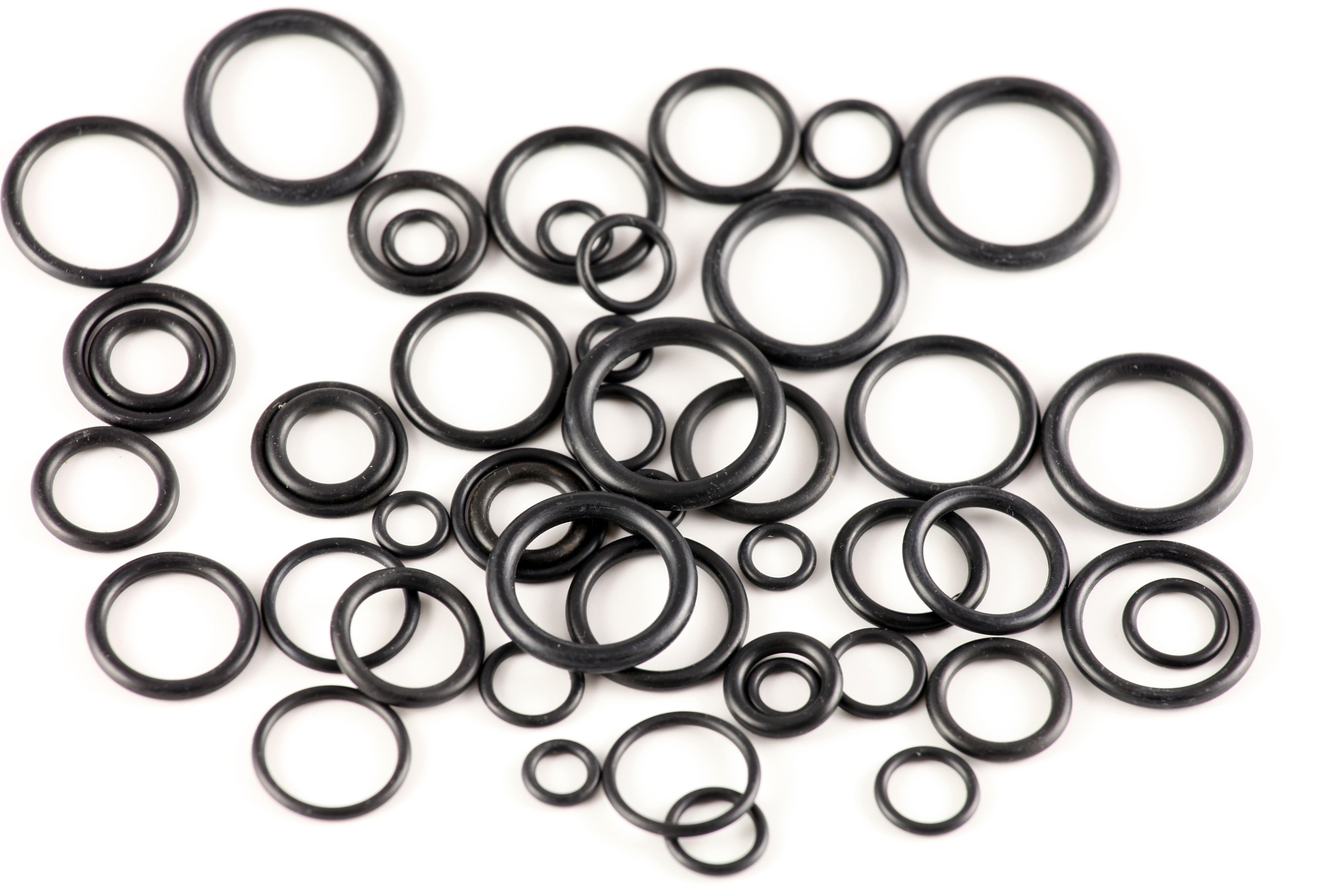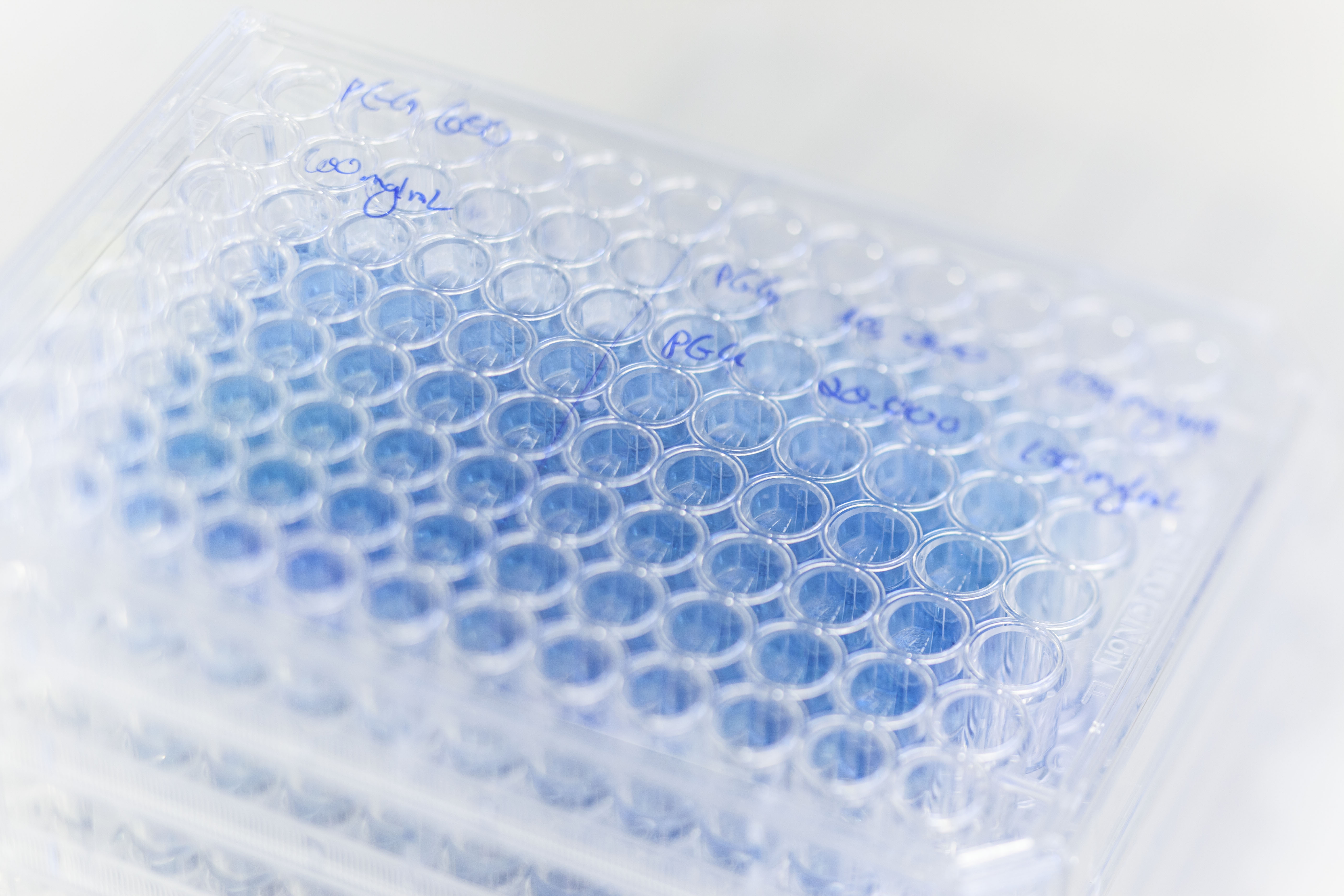Per- and polyfluoroalkyl substances, or PFAS for short, play a key role in numerous branches of industry due to their properties and wide range of applications. The downside is that they are not degradable and accumulate in the environment, animals and humans. Since some PFAS substances have been proven to be harmful to our health, politicians are discussing an EU-wide ban. Researchers at Fraunhofer IGB are working on harmless alternatives that can be used to substitute PFAS. In addition, the institute is developing various solutions to remove PFAS from water.
These were also the focus of the 22nd Wastewater Colloquium at Fraunhofer IGB “PFAS und Spurenstoffe im Brennpunkt” (PFAS and Trace Substances in the Spotlight) in September 2023. Experts from the Fraunhofer Chemistry Alliance, including Dr. Michaela Müller from Fraunhofer IGB, discussed possibilities for PFAS substitution as well as material and technical development goals in a dialog with user industries in October 2023.
 Fraunhofer Institute for Interfacial Engineering and Biotechnology IGB
Fraunhofer Institute for Interfacial Engineering and Biotechnology IGB
